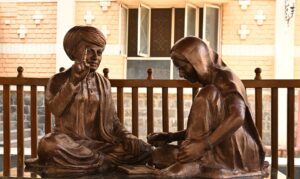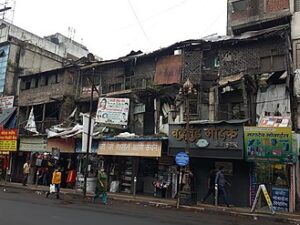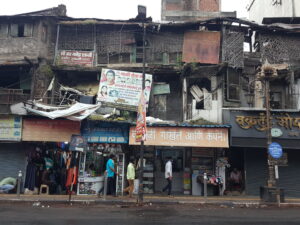
“I measure the progress of a community with the degree of progress women have achieved”- Dr Bhimrao Ambedkar
As the struggle for independence was churning in violence and anarchy through the prominent leadership of Bal Gangadhar Tilak in Maharashtra, a faint portion of the Indian reformists delved into the entire question of independence itself. For them, the central question was not in acquiring a nation that had been subjugated at the hands of British Imperialism but focused on emancipation from the internal strife that was being patronised by the hierarchical and often orthodox nature of the Brahmanical system. The implication of this stifled the voices of those who were either low in the caste category or were women in gender. In pursuit of this unconventional line of thought, pioneering efforts for social change were enacted by the reformist couple, Jyotiba Phule and Savitribai Phule, who diverted themselves from the visibly evident political struggle to raise the position of the debilitating minority.
At the height of Peshwai rule in Poona, the milieu of the state was riddled with Brahmanical orthodoxy that undermined the rights of the lower castes and negated education and learning for women. Arising in such a contagious situation, the Phules endeavoured and opened the first indigenous girls’ school in India on January 1, 1848, located in Bhudwar Peth and housed in Bhidewada. The school was composed of only two rooms that were munificently granted by Tatyasaheb Bhide, who inspired by the couple’s earlier struggles donated rooms in his ancestral wada to function as classrooms for female students irrespective of their social and religious affiliations. The wada thus attracted like-minded people who endeavoured for the cause of women empowerment, one of which was Sagunabai, a mentor to Jyotiba and a revolutionary feminist herself, who also helped the Phules establish the school.

However, these efforts against the established societal norms were met with demonstrations by the traditionalists, who were irked by the growing popularity of the Phules. It is often quoted that Savitribai, en route to the school, was often hurled with cow dung and stones by the people for which she kept an extra pair of saris to change them and then teach at the school. Their efforts for social change through Bhidewada were also received with anathema from their families even Jyotiba’s father ousted the couple from their ancestral home due to their revolutionary activities that stood contrary and even threatening to the traditionally accepted Brahmanical ethos. In this situation of dependency, they received solace from the close friend of Jyotiba, Usman Sheikh, who with his sister, Fatima Sheikh gave space for the Phules at their home. Emanated by the stance for liberating women through knowledge by providing formal education and learning, Fatima also joined hands with Savitribai to teach at the developing school of Bhidewada. Gradually, the curriculum taught at school wooed a significant number of children with subjects in mathematics, sciences, and social sciences unlike a religious curriculum, delved into the recitation of the Vedas and the Shastras by the Brahmins.
 The struggle for social revolution upheld by Jyotiba and Savitribai Phule through fostering education for women in India and their self-independency paved the way for new cultural and social transformations that became the plinth over which the ‘modernist’ thoughts representative of today’s feminism still stands. It was only with the advent of digital expression that the efforts of the revolutionary couple were acknowledged as it received global appreciation being diffused through discussions and speeches by international scholars and national intellectuals alike. Globally, Savitribai was brought from the margins and raised as a feminist icon with vehement reverence placed on her legacy of contributions to the poor and the marginalised. However, the tangible edifice that remains as the nascent steps towards the emancipation of women, Bhidewada still stands in the oblivions of history.
The struggle for social revolution upheld by Jyotiba and Savitribai Phule through fostering education for women in India and their self-independency paved the way for new cultural and social transformations that became the plinth over which the ‘modernist’ thoughts representative of today’s feminism still stands. It was only with the advent of digital expression that the efforts of the revolutionary couple were acknowledged as it received global appreciation being diffused through discussions and speeches by international scholars and national intellectuals alike. Globally, Savitribai was brought from the margins and raised as a feminist icon with vehement reverence placed on her legacy of contributions to the poor and the marginalised. However, the tangible edifice that remains as the nascent steps towards the emancipation of women, Bhidewada still stands in the oblivions of history.
For a significant period, the structure remained a passive and crumbling edifice, conveniently forgotten from the languid memory of the Punekars. As insignificant and unassuming in appearance from other such structures in the neighbourhood, Bhidewada represented the ignorance of a corroding construction that was to be seen from above the modernised shops that had excavated a space amongst its niches. Concerned with its importance and the present state of the space, a massive demonstration by 500 Anganwadi teachers outside the Pune Municipal Corporation (PMC) office was enacted to declare it a national heritage status. Moved by the active efforts of its citizens, the Bombay High Court had decreed an open claim to the PMC for building a national memorial at the site. Tapping on some recent developments on the matter, the Phule memorial is planned to include a Savitribai statue, and a space with seven rooms, in which one room will be recreated into a classroom representing the era of the Phule. In contrast, others will house a library, reading rooms, and headmaster’s room.
Navigating independently through taboo and inflicted humiliation to open the Bhidewada school as India’s first girls’ school, rendered unacceptable to the mainstream. The Phules in this sense became the pioneers in the social reformation of Indian society and inspired generations to attain knowledge for liberation. Thus the efforts to turn the crumbling edifice into a national memorial by the PMC highlights another ideation of independence through the efforts of the Phules that solemnises the social bend of the reformists for the independent struggle that created an intellectual expression for which the city of Pune is prominently renowned.

